- Home
- Неизвестный
The Social Costs of Pornography: A Collection of Papers Page 20
The Social Costs of Pornography: A Collection of Papers Read online
Page 20
Radio communication was, by contrast, treated thus by the Communications Act of 1934:
Nothing in this Act shall be understood or construed to give the Commission the power of censorship over the radio communications or signals transmitted by any radio station, and no regulation or condition shall be promulgated or fixed by the Commission which shall interfere with the right of free speech by means of radio communication. No person within the jurisdiction of the United States shall utter any obscene, indecent, or profane language by means of radio communication.9
Contradictory as these two clauses might seem to modern ears, the law actually followed the old common law pattern for print media, which forbad prior restraint but allowed subsequent legal prosecution for forbidden publication. In fact, the Federal Communications Commission (FCC) was given explicit power to suspend the licenses of broadcasters who allowed obscene or profane speech on the air.
Television, when it came along, was regulated by the same Commission under the same Act. By the time cable television and later the internet fell under FCC regulation, the Supreme Court had become involved in the definition of obscenity. Congress included in the Federal Communications Act of 1996 an Internet Decency Act, which forbad dissemination of indecent and patently offensive materials to minors, but the act was struck within the year by the Supreme Court as overbroad. The Act, ruled the Court, penalized constitutionally protected expression for fear that it might fall before the unsupervised eyes of the young without considering less restrictive means to protect the young by limiting their online access to inappropriate websites.10
The Court’s introduction of a constitutional dimension to obscenity law was signaled in 1952 in the case of Joseph Burstyn, Inc. v. Wilson, which reversed the exclusion of motion pictures from First Amendment scrutiny, and it began in earnest with the case of Roth v. United States in 1957, which introduced a decade and a half of legal upheaval before the settlement of a standard in the 1973 case of Miller v. California.11 Roth, which involved a prosecution under the old Comstock Law, reaffirmed the previous doctrine of the Court that the First Amendment did not protect obscenity, but it began a process of reinterpreting the term obscenity that soon gave full constitutional protection to materials that had long been forbidden by statute as obscene.
Obvious in the background to Roth were changing social practice and public opinion: The phenomenal success of Playboy magazine immediately upon its appearance in 1953 and the government’s decision not to pursue it as obscene raised the question what the legal standard was, statutory law not having been altered, and the Court decided to clarify the matter by invoking the Constitution. Distinguishing the portrayal of sex from obscenity, as the Comstock Law for mail and the voluntary Hays Code for movies did not, and rejecting the old British standard from an 1868 case that treated as suppressible anything that might corrupt the vulnerable, the Roth Court announced the following test: “whether to the average person, applying contemporary community standards, the dominant theme of the material taken as a whole appeals to the prurient interest.”
By the time of the Miller case, the various elements of this test had been disaggregated, other dicta in the Roth opinion had been litigated, and the locus of decision apparently clarified: To qualify as obscene and thus unprotected, the material had to appeal to prurience, had to depict “in a patently offensive way, sexual conduct specifically defined by applicable state law,” and had to lack “serious literary, artistic, political, or scientific value” when taken as a whole.”
While determining what constitutes prurience and patent offensiveness in particular cases was left to juries, states were thus instructed to rewrite their laws to define—usually in language that would itself previously have been suppressible—precisely what body parts in what positions doing what could not be shown. Judges, thanks to the “serious value” prong of the test and the restriction of the prurience prong to the dominant theme of the whole work, not isolated passages or moments, were left as guardians of science and literature against whatever will to “Comstockery” might still remain in the people at large.
Miller seemed at the time to be a compromise opinion. Its “serious value” standard was a retreat from the “utterly without redeeming social value” standard floated in an earlier case, but it was presumed that juries would enforce local mores. In practice, its chief effect was probably to force the precise definition of excludable images. Commentators typically opined that Miller left “hard-core” pornography unprotected, while taking “soft-core” under the protective mantle of the Constitution.
The First Amendment having been firmly set as the dominant regulatory limit and so a presumption having been established against suppression of pornography, legislative attention turned to regulating the “time, place, and manner” of its dissemination, something courts had upheld in other contexts even for constitutionally protected speech. One approach to regulating pornography that the Court allowed in the post-Miller years involved zoning restrictions and regulations in a gray area of “indecent” expression between the obscene, which was unprotected, and that expression which was fully protected. Jurisdictions could cluster indecent businesses in “red light districts” or alternatively, scatter them apart, while the FCC was permitted to confine “dirty words” on radio or nudity on cable television to late-night hours, to protect children’s ears and eyes.12 But the internet—which, as others have said, puts an “adult bookstore” in every home at any hour of every day—quickly overcame both the physical and the broadcast zoning exception, and as noted above, the Court canceled Congress’s first attempt to suppress internet indecency. Concerning child pornography, which had been ruled unprotected in any venue, because its initial production necessarily involved child abuse, technology again outstripped the lawyers: Faced with computer-generated images of children in pornography, the Court found its rationale undercut and disallowed regulation.13
FOUR PERSPECTIVE ON PORNOGRAPHY
What are the interests and the ideas that drive the efforts both to regulate and to prevent the regulation of pornography? The interests, I suppose, are at once more immediate and less visible than in most other areas of policymaking.
Obviously, those who profit from making and selling pornography would favor its deregulation and have benefited enormously from that over recent decades. They are hampered politically only to the extent that some shame still attaches to the industry, but some of the most shameless have turned even this to political advantage—think of Larry Flynt, who brought down a Speaker-designate of the House of Representatives. Their customers likewise might be presumed to support deregulation, though again, to the extent that shame still operates, they are likely to want to cover their preference with a principle, or express it only in the privacy of a voting booth.
Those whose interests are most directly on the other side—women and children exploited in the making of pornography, children who deserve a decent environment in which to mature, men addicted to pornography and their wives— will generally need to rely for protection on others whose concern is moral or even moralistic. These will include parents and others who care for the character of a community and its denizens, and maybe also those of aesthetic sensibility who recognize that redefining obscenity in law does not make the “offensive, foul, filthy, and disgusting” inoffensive or clean.
To be sure, there can be all sorts of complexities in the analysis of interests. In antebellum America, for example, attempts at federal regulation of morality were typically rebuffed by defenders of slavery, who feared a precedent for interference with their own domestic practices, while in the aftermath of the Civil War, Abolitionist success propelled Christian moralists of many kinds. Still, whether because they drive action on their own or mask interests that dare not speak their name, political ideas are critical to understand if one is to grasp what lies behind public policy. In the modern regulation of pornography, there are at least four distinct sets of ideas or perspectives to consider.
Christian moralism. First, there are the Christian moralists, responsible for the traditional suppression of obscenity and, as in the case of Comstock, motive forces behind new statutes and policies. It bears repeating that traditional Christian sexual morality is strict and simple: Sex is licit only within marriage, marriage is intended to be for life, and every act of marital intimacy is to be open to procreation, permitting no artificial contraception and frowning on sexual practices that are not procreative in type.
Although the Protestant Reformation brought an acceptance in some denominations of divorce and remarriage in certain limited circumstances, other deviation in Christian moral doctrine is recent, beginning with the allowance of contraception in hardship cases by the Anglican Communion in 1930. Since Christ himself had said in the Sermon on the Mount that “every one who looks at a woman lustfully has already committed adultery with her in his heart,”14 it is evident to Christians that pornography is sinful in itself.15 The poetry of love merits its own book in the Old Testament, The Song of Solomon, which is undeniably erotic in its imagery, however allegorical its interpretation, but the Christian is instructed to live chastely, inside marriage and out.
Comstock spent little time elaborating on Christian teaching concerning these fundamentals, but he clearly drew his inspiration from a Christian sensibility. He wrote about obscene publications:
The effect of this cursed business on our youth and society, no pen can describe. It breeds lust. Lust defiles the body, debauches the imagination, corrupts the mind, deadens the will, destroys the memory, sears the conscience, hardens the heart, and damns the soul. It unnerves the arm, and steals away the elastic step. It robs the soul of manly virtues, and imprints upon the mind of the youth, visions that throughout life curse the man or woman. Like a panorama, the imagination seems to keep this hated thing before the mind, until it wears its way deeper and deeper, plunging the victim into practices that he loathes.16
He is confident in his knowledge of right and wrong on these matters, indignant at those who engage in wrongdoing and at the “liberals” who apologize for them, and confident in his ability to employ the law and moral force of government to fight sexual vice. Though a reformer, unlike the abolitionists Comstock did not imagine a transformed society; vice might be suppressed, but I don’t believe he ever supposed it could be eliminated. His is the language of vigilance, appealing to a consensus among the righteous—and finding it widespread in Protestant America, even in the midst of demographic and social change.
Neither in temperament nor in occupation is there anything Catholic about Anthony Comstock. The Christian reformers with whom he was often associated were all Protestants, and sometimes, especially in their signature campaign against the moral evils associated with drink, not a little anti-Catholicism was implicit or even explicit in their rhetoric, and indeed the Comstock Law passed in “hot haste” thanks to the patronage of House Speaker James G. Blaine, probably the most influential anti-Catholic politician of the age.17 It is particularly interesting, then, that moral control of motion pictures in the early twentieth century was arranged with important Catholic participation, evident in the clear Catholic influence on the Hays Code itself, prompted by the formation of a Catholic Legion of Decency, and drafted by Fr. Daniel Lord, SJ, professor of dramatics at St. Louis University and editor of a widely circulated publication for Catholic youth.
The Hays Code included not only a list of rules covering numerous matters beyond obscenity, but often a list of reasons underlying them, as can be gleaned from this excerpt:
Law, natural or human, shall not be ridiculed, nor shall sympathy be created for its violation. By natural law is understood the law which is written in the hearts of all mankind, the great underlying principles of right and justice dictated by conscience. By human law is understood the law written by civilized nations.
Here is the elaboration of one rule about the depiction of sex:
Out of regard for the sanctity of marriage and the home, the triangle, that is, love of a third party by one already married, needs careful handling. The treatment should not throw sympathy against marriage as an institution. Scenes of passion must be treated with an honest acknowledgment of human nature and its normal reactions. Many scenes cannot be presented without arousing dangerous emotions on the part of the immature, the young, or the criminal classes.
There follows a recommendation that even pure love not be shown in all its facts, and as for impure love, “the love which society has always regarded as wrong and which has been banned by divine law,” it must not be shown as attractive, laughable, or permissible, nor in a way to arouse “morbid curiosity.” As even these brief excerpts make clear, the code did not merely prevent egregious harm but instead attempted positive moral instruction. The basic prohibition of vulgarity, obscenity, and profanity is thought not to even need further reasons beyond the mere statement of the rules forbidding them.18
Liberalism. A second group of ideas rightly can be clustered under the name Comstock already gives them, liberal. Beginning in earnest in mid-nineteenth-century England and captured in works such as John Stuart Mill’s On Liberty, liberalism would limit government regulation to “other-regarding” actions and leave individuals the masters of their personal moral opinions and behavior.
While their precise claims were often expressed in muted form in environments where Christian moralism was widely and deeply influential, liberals held sexual morality to be a private matter and thus called into question social and legal practices that restricted sex to marriage. Moreover, as in Mill’s celebrated tract, they made freedom of speech an independent value and thus found censorship of sexual material doubly offensive: for imposing upon free expression, and for squelching sexual freedom.
Although the theories of European authors such as Friedrich Nietzsche and Sigmund Freud undercut the ideal of the rational person celebrated by the early liberals, the publication and dissemination of their works served the liberal argument: Their circulation must be allowed for the sake of human freedom, and because the sexual knowledge they meant to convey addresses the longing for human happiness. Modern authors such as George Bernard Shaw, James Joyce, and D. H. Lawrence produced works that attracted the censors’ wrath and the critics’ acclaim. At the very moment when self-censorship of the film industry was taking place over liberal protest, federal judges began to free admired literary work from the censors’ strictures. The duty of society to prevent harmful speech eventually fell before the liberals’ confidence that censorship was generally, maybe always, more harmful than any speech itself could be.
The commonsense observation that the allure of vice is often enhanced by its suppression—and the observed success of literary productions known to have attracted censorial interest, because of that interest—seemed to confirm the liberals’ argument in favor of free expression: Even if censorship was not wrong in principle, it was futile in practice, so prudence confirmed what prurience sought, the abandonment of restrictions on what could be read and seen.19
Actually, the case for censorship usually had depended upon assumptions of social inequality, and these played themselves out in America in a curious way. When obscene material was available only to the wealthy or the privileged, it was thought unnecessary to restrain it by law; precisely as technology equalized the access of social classes to obscenity, the call for regulation had been raised.
This is exemplified by the different treatment accorded movies and literature in the 1930s. As mass entertainment, movies were seen as especially dangerous in their potential effects, and so in their potential to corrupt; literature took effort and so could be granted wider liberty, its tendency to corrupt being outweighed by its promise to uplift. But precisely the more sophisticated literary classes were likely to take an interest not only in literature but in constitutional law, and to understand its political potential. First in the doctrine of speech, then in the doctrine of sexual license, dubbed “privacy,” courts began to enforce
as constitutional commands the liberal ideals of personal freedom. Defended as responses to social evolution, they effectively closed paths of social development: After all, when a policy has been declared unconstitutional, legislative power is constrained and all subsequent political action has to take into its calculations the potential cost of lawsuits and the likelihood of their failure.
Liberalism not only succeeded in winning over the most sophisticated social classes, but it entrenched their authority over what was permissible. Moreover, since liberalism came for similar reasons to dominate the academy and the press, today it takes a bold effort at recovery in academic discourse even to formulate reasons why anyone ever thought otherwise.
As actions follow thoughts, so the case for freedom of thought brought in its train the case for freedom of action. And the dynamic proceeded even as the character of liberalism itself morphed: Freedom of speech, originally celebrated as the avenue to truth, came to be seen as the only plausible position in a climate of pervasive skepticism, while sexual freedom, originally presented as nature’s rebellion against the strictures of convention, came to seem all the more cogent as the authority of natural standards was increasingly subjected to doubt.

 The Bolivian Diary
The Bolivian Diary Caffeine Blues_ Wake Up to the Hidden Dangers of America's #1 Drug ( PDFDrive )
Caffeine Blues_ Wake Up to the Hidden Dangers of America's #1 Drug ( PDFDrive )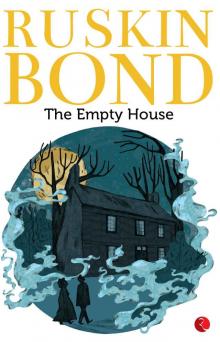 The Empty House
The Empty House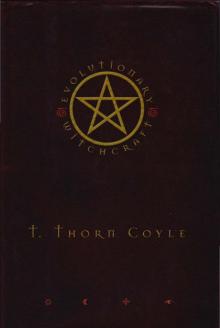 T Thorn Coyle Evolutionary Witchcraft (pdf)
T Thorn Coyle Evolutionary Witchcraft (pdf)![K J Emrick & Kathryn De Winter - [Moonlight Bay Psychic Mystery 01-06] - A Friend in; on the Rocks; Feature Presentation; Manor of; by Chocolate Cake; A-Maze-Ing Death (retail) (epub) Read online](http://freenovelread.comhttps://picture.efrem.net/img/nienyi/k_j_emrick_and_kathryn_de_winter_-_moonlight_bay_psychic_of_by_chocolate_cake_a-maze-ing_death_retail_epub_preview.jpg) K J Emrick & Kathryn De Winter - [Moonlight Bay Psychic Mystery 01-06] - A Friend in; on the Rocks; Feature Presentation; Manor of; by Chocolate Cake; A-Maze-Ing Death (retail) (epub)
K J Emrick & Kathryn De Winter - [Moonlight Bay Psychic Mystery 01-06] - A Friend in; on the Rocks; Feature Presentation; Manor of; by Chocolate Cake; A-Maze-Ing Death (retail) (epub) Next Day of the Condor
Next Day of the Condor Onyx
Onyx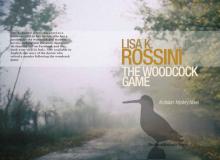 The Woodcock Game: An Italian Mystery Novel
The Woodcock Game: An Italian Mystery Novel Granta 122: Betrayal (Granta: The Magazine of New Writing)
Granta 122: Betrayal (Granta: The Magazine of New Writing)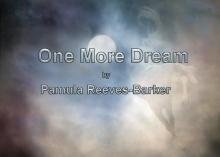 One More Dream
One More Dream Cosa Nostra by Emma Nichols) 16656409 (z-lib.org) (1)-compressed
Cosa Nostra by Emma Nichols) 16656409 (z-lib.org) (1)-compressed Cowboy by J. M. Snyder
Cowboy by J. M. Snyder Colossus
Colossus Star Trek - DS9 011 - Devil In The Sky
Star Trek - DS9 011 - Devil In The Sky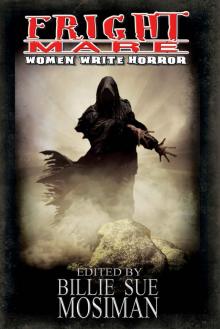 Fright Mare-Women Write Horror
Fright Mare-Women Write Horror The Future Is Japanese
The Future Is Japanese In the Witching Hour
In the Witching Hour Mammoth Books presents Wang's Carpets
Mammoth Books presents Wang's Carpets The Cradle King: The Life of James VI and I, the First Monarch of a United Great Britain
The Cradle King: The Life of James VI and I, the First Monarch of a United Great Britain Stalking Moon
Stalking Moon Hostage To The Devil
Hostage To The Devil![Harris, Daisy - Mere Passion [Ocean Shifters 2] (Siren Publishing Classic) Read online](http://i1.bookreadfree.com/i/03/23/harris_daisy_-_mere_passion_ocean_shifters_2_siren_publishing_classic_preview.jpg) Harris, Daisy - Mere Passion [Ocean Shifters 2] (Siren Publishing Classic)
Harris, Daisy - Mere Passion [Ocean Shifters 2] (Siren Publishing Classic) Day, Sunny - Hot in Space (Siren Publishing Ménage and More)
Day, Sunny - Hot in Space (Siren Publishing Ménage and More) Five Books Of The Lives, Heroic Deeds And Sayings Of Gargantua And His Son Pantagruel
Five Books Of The Lives, Heroic Deeds And Sayings Of Gargantua And His Son Pantagruel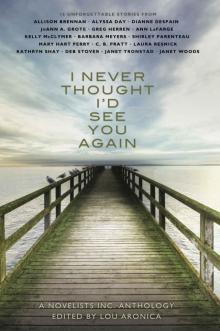 I Never Thought I'd See You Again: A Novelists Inc. Anthology
I Never Thought I'd See You Again: A Novelists Inc. Anthology Billion dollar baby bargain.txt
Billion dollar baby bargain.txt![Chenery, Marisa - Turquoise Eye of Horus [Egyptian Shifters 1] (Siren Publishing Classic) Read online](http://i1.bookreadfree.com/i1/03/26/chenery_marisa_-_turquoise_eye_of_horus_egyptian_shifters_1_siren_publishing_classic_preview.jpg) Chenery, Marisa - Turquoise Eye of Horus [Egyptian Shifters 1] (Siren Publishing Classic)
Chenery, Marisa - Turquoise Eye of Horus [Egyptian Shifters 1] (Siren Publishing Classic) Cat Magic
Cat Magic Star Trek - DS9 - Warped
Star Trek - DS9 - Warped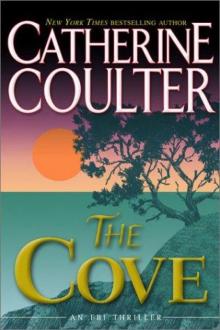 Catherine Coulter - FBI 1 The Cove
Catherine Coulter - FBI 1 The Cove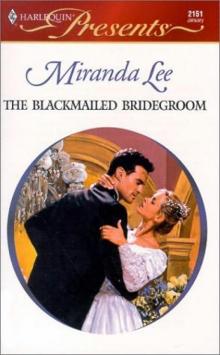 Miranda Lee -The Blackmailed Bridegroom
Miranda Lee -The Blackmailed Bridegroom The Seashell Anthology of Great Poetry
The Seashell Anthology of Great Poetry Dragon Moon
Dragon Moon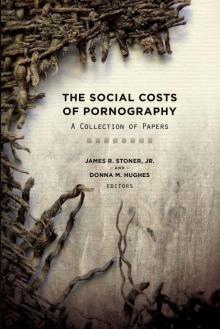 The Social Costs of Pornography: A Collection of Papers
The Social Costs of Pornography: A Collection of Papers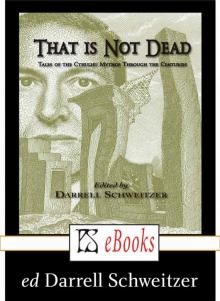 That Is Not Dead
That Is Not Dead Best New Horror: Volume 25 (Mammoth Book of Best New Horror)
Best New Horror: Volume 25 (Mammoth Book of Best New Horror) This Christmas by J. M. Snyder
This Christmas by J. M. Snyder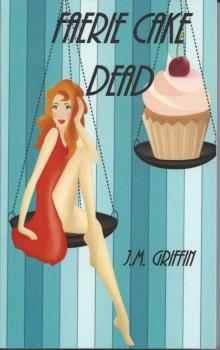 Faerie Cake Dead
Faerie Cake Dead CS-Dante's Twins
CS-Dante's Twins EFD1: Starship Goodwords (EFD Anthology Series from Carrick Publishing)
EFD1: Starship Goodwords (EFD Anthology Series from Carrick Publishing) Echo Burning by Lee Child
Echo Burning by Lee Child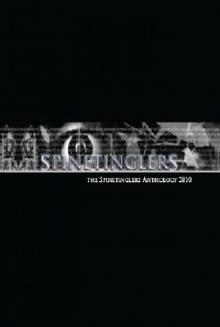 The Spinetinglers Anthology 2010
The Spinetinglers Anthology 2010 Wild Hearts
Wild Hearts Violet Winspear - Sinner ...
Violet Winspear - Sinner ... Broken Angels
Broken Angels FearNoEvil
FearNoEvil![Santiago, Lara - Range War Bride [Tasty Treats 11] (Siren Publishing PolyAmour) Read online](http://i1.bookreadfree.com/i1/03/30/santiago_lara_-_range_war_bride_tasty_treats_11_siren_publishing_polyamour_preview.jpg) Santiago, Lara - Range War Bride [Tasty Treats 11] (Siren Publishing PolyAmour)
Santiago, Lara - Range War Bride [Tasty Treats 11] (Siren Publishing PolyAmour) 8 Great Hebrew Short Novels
8 Great Hebrew Short Novels This Is How You Die: Stories of the Inscrutable, Infallible, Inescapable Machine of Death
This Is How You Die: Stories of the Inscrutable, Infallible, Inescapable Machine of Death The Steampowered Globe
The Steampowered Globe While We Wait by J. M. Snyder
While We Wait by J. M. Snyder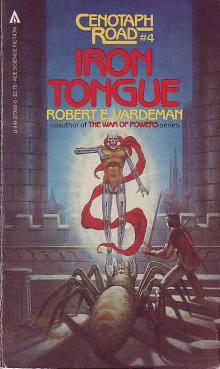 Iron Tongue cr-4
Iron Tongue cr-4![Stieg Larsson [Millennium 02] The Girl Who Played with Fire v5.0 (LIT) Read online](http://i1.bookreadfree.com/i1/03/31/stieg_larsson_millennium_02_the_girl_who_played_with_fire_v5_0_lit_preview.jpg) Stieg Larsson [Millennium 02] The Girl Who Played with Fire v5.0 (LIT)
Stieg Larsson [Millennium 02] The Girl Who Played with Fire v5.0 (LIT)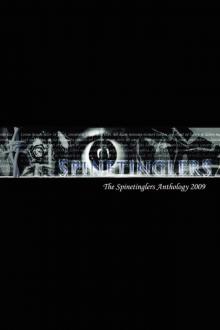 The Spinetinglers Anthology 2009
The Spinetinglers Anthology 2009 Bowles, Jan - Branded by the Texas Rancher (Siren Publishing Classic)
Bowles, Jan - Branded by the Texas Rancher (Siren Publishing Classic) Brown, Berengaria - Vivienne's Vacation (Siren Publishing Ménage and More)
Brown, Berengaria - Vivienne's Vacation (Siren Publishing Ménage and More) Inheritors
Inheritors Arthur Conan Doyle: A Life in Letters
Arthur Conan Doyle: A Life in Letters Cunningham, Pat - Coyote Moon (BookStrand Publishing Romance)
Cunningham, Pat - Coyote Moon (BookStrand Publishing Romance) Static Line
Static Line Ghost Mysteries & Sassy Witches (Cozy Mystery Multi-Novel Anthology)
Ghost Mysteries & Sassy Witches (Cozy Mystery Multi-Novel Anthology) Elizabeth Neff Walker - Puppy Love
Elizabeth Neff Walker - Puppy Love Ghosts in the Machine
Ghosts in the Machine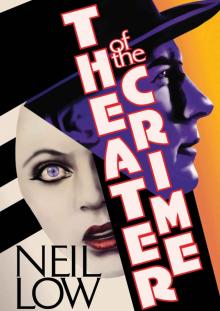 Theater of the Crime (Alan Stewart and Vera Deward Murder Mysteries Book 6)
Theater of the Crime (Alan Stewart and Vera Deward Murder Mysteries Book 6)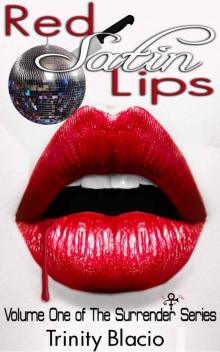 Red Satin Lips, Book One (The Surrender Series)
Red Satin Lips, Book One (The Surrender Series)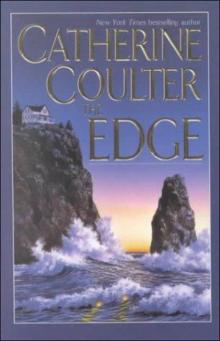 Catherine Coulter - FBI 4 The Edge
Catherine Coulter - FBI 4 The Edge StateoftheUnion
StateoftheUnion Fantastic Women: 18 Tales of the Surreal and the Sublime from Tin House
Fantastic Women: 18 Tales of the Surreal and the Sublime from Tin House Sara Wood-Expectant Mistress original
Sara Wood-Expectant Mistress original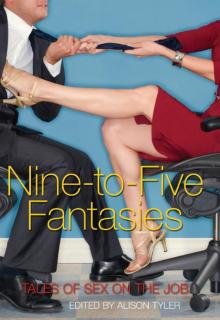 Nine-to-Five Fantasies: Tales of Sex on the Job
Nine-to-Five Fantasies: Tales of Sex on the Job Granta 133
Granta 133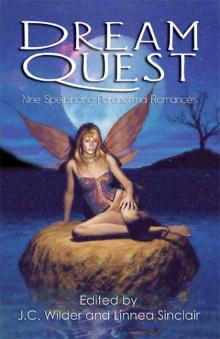 Dream Quest
Dream Quest The Warlock in Spite of Himself wisoh-2
The Warlock in Spite of Himself wisoh-2 Glenn, Stormy - Mating Heat (Siren Publishing Ménage Amour)
Glenn, Stormy - Mating Heat (Siren Publishing Ménage Amour) Davis, Lexie - Toys from Santa (Siren Publishing Classic)
Davis, Lexie - Toys from Santa (Siren Publishing Classic) Once Dead, Twice Shy
Once Dead, Twice Shy McSweeney's Enchanted Chamber of Astonishing Stories
McSweeney's Enchanted Chamber of Astonishing Stories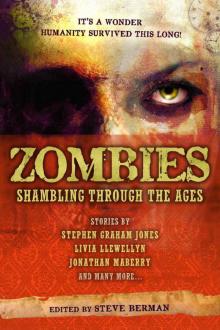 Zombies: Shambling Through the Ages
Zombies: Shambling Through the Ages Baghdad Without a Map
Baghdad Without a Map Banshee Cries (the walker papers)
Banshee Cries (the walker papers)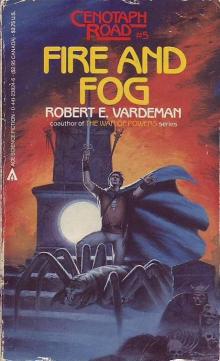 Fire and Fog cr-5
Fire and Fog cr-5 The Twelve Hot Days of Christmas
The Twelve Hot Days of Christmas The Relations of Vapor: Dot - Connivance
The Relations of Vapor: Dot - Connivance![Harris, Daisy - Mere Temptation [Ocean Shifters 1] (Siren Publishing Classic) Read online](http://i1.bookreadfree.com/i2/04/11/harris_daisy_-_mere_temptation_ocean_shifters_1_siren_publishing_classic_preview.jpg) Harris, Daisy - Mere Temptation [Ocean Shifters 1] (Siren Publishing Classic)
Harris, Daisy - Mere Temptation [Ocean Shifters 1] (Siren Publishing Classic)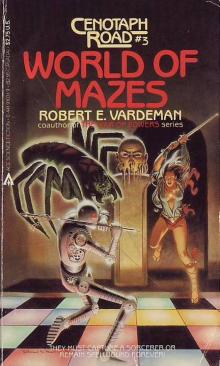 World of Mazes cr-3
World of Mazes cr-3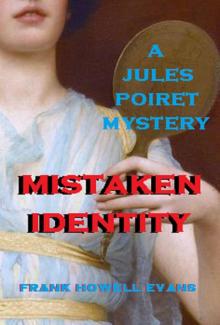 Mistaken Identity (A Jules Poiret Mystery Book 26)
Mistaken Identity (A Jules Poiret Mystery Book 26) Star Trek - DS9 - Fall of Terok Nor
Star Trek - DS9 - Fall of Terok Nor Not Like I'm Jealous or Anything: The Jealousy Book (Ruby Oliver)
Not Like I'm Jealous or Anything: The Jealousy Book (Ruby Oliver) Skaterboy by J. M. Snyder
Skaterboy by J. M. Snyder The Sorcerer_s Skull cr-2
The Sorcerer_s Skull cr-2 The Columbia Anthology of Modern Japanese Literature (Modern Asian Literature Series)
The Columbia Anthology of Modern Japanese Literature (Modern Asian Literature Series) New Erotica 5
New Erotica 5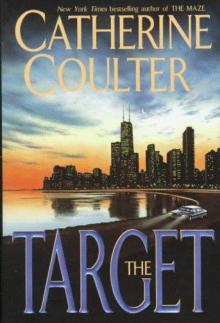 Catherine Coulter - FBI 3 The Target
Catherine Coulter - FBI 3 The Target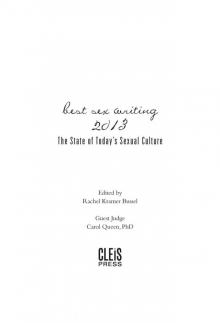 Best Sex Writing 2013: The State of Today's Sexual Culture
Best Sex Writing 2013: The State of Today's Sexual Culture Factoring Humanity
Factoring Humanity Huia Short Stories 11
Huia Short Stories 11 Call of the Wilds
Call of the Wilds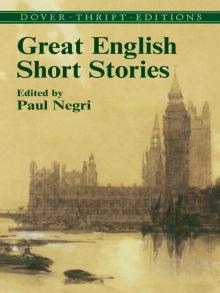 Great English Short Stories (Dover Thrift Editions)
Great English Short Stories (Dover Thrift Editions)![Ramagos, Tonya - Logan's Lessons [Sunset Cowboys 2] (Siren Publishing Classic) Read online](http://i1.bookreadfree.com/i2/04/10/ramagos_tonya_-_logans_lessons_sunset_cowboys_2_siren_publishing_classic_preview.jpg) Ramagos, Tonya - Logan's Lessons [Sunset Cowboys 2] (Siren Publishing Classic)
Ramagos, Tonya - Logan's Lessons [Sunset Cowboys 2] (Siren Publishing Classic)![Morgan, Nicole - Sweet Redemption [Sweet Awakenings 1] (Siren Publishing Allure) Read online](http://i1.bookreadfree.com/i2/04/10/morgan_nicole_-_sweet_redemption_sweet_awakenings_1_siren_publishing_allure_preview.jpg) Morgan, Nicole - Sweet Redemption [Sweet Awakenings 1] (Siren Publishing Allure)
Morgan, Nicole - Sweet Redemption [Sweet Awakenings 1] (Siren Publishing Allure)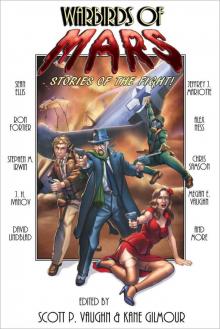 Warbirds of Mars: Stories of the Fight!
Warbirds of Mars: Stories of the Fight! Original Version of Edited Godwin Stories(lit)
Original Version of Edited Godwin Stories(lit) Where The Hell is Boulevard?
Where The Hell is Boulevard?![Chemical [se]X Read online](http://i1.bookreadfree.com/i2/04/13/chemical_sex_preview.jpg) Chemical [se]X
Chemical [se]X Allison Brennan - See No Evil
Allison Brennan - See No Evil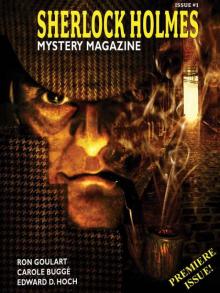 Sherlock Holmes Mystery Magazine #1
Sherlock Holmes Mystery Magazine #1